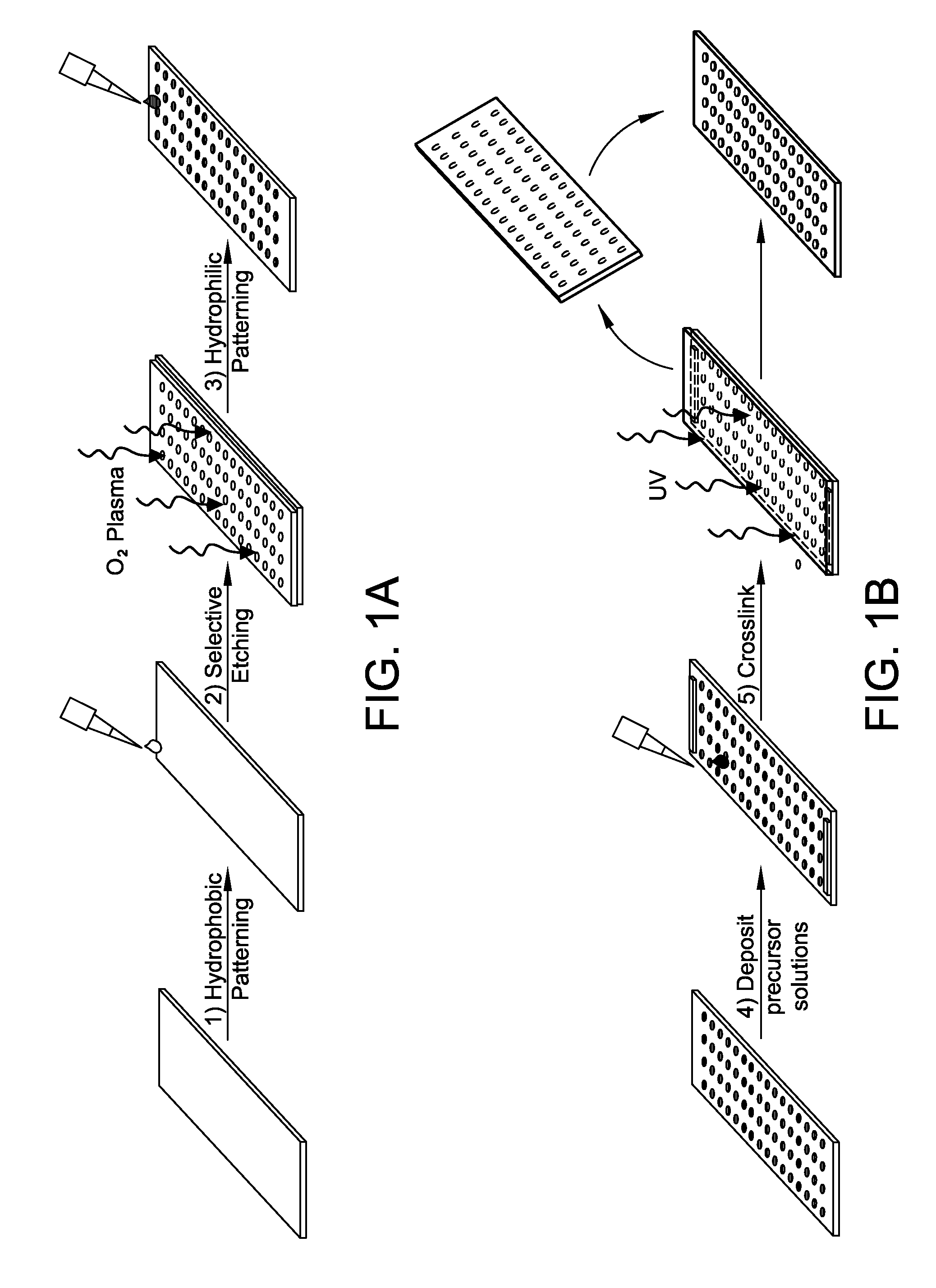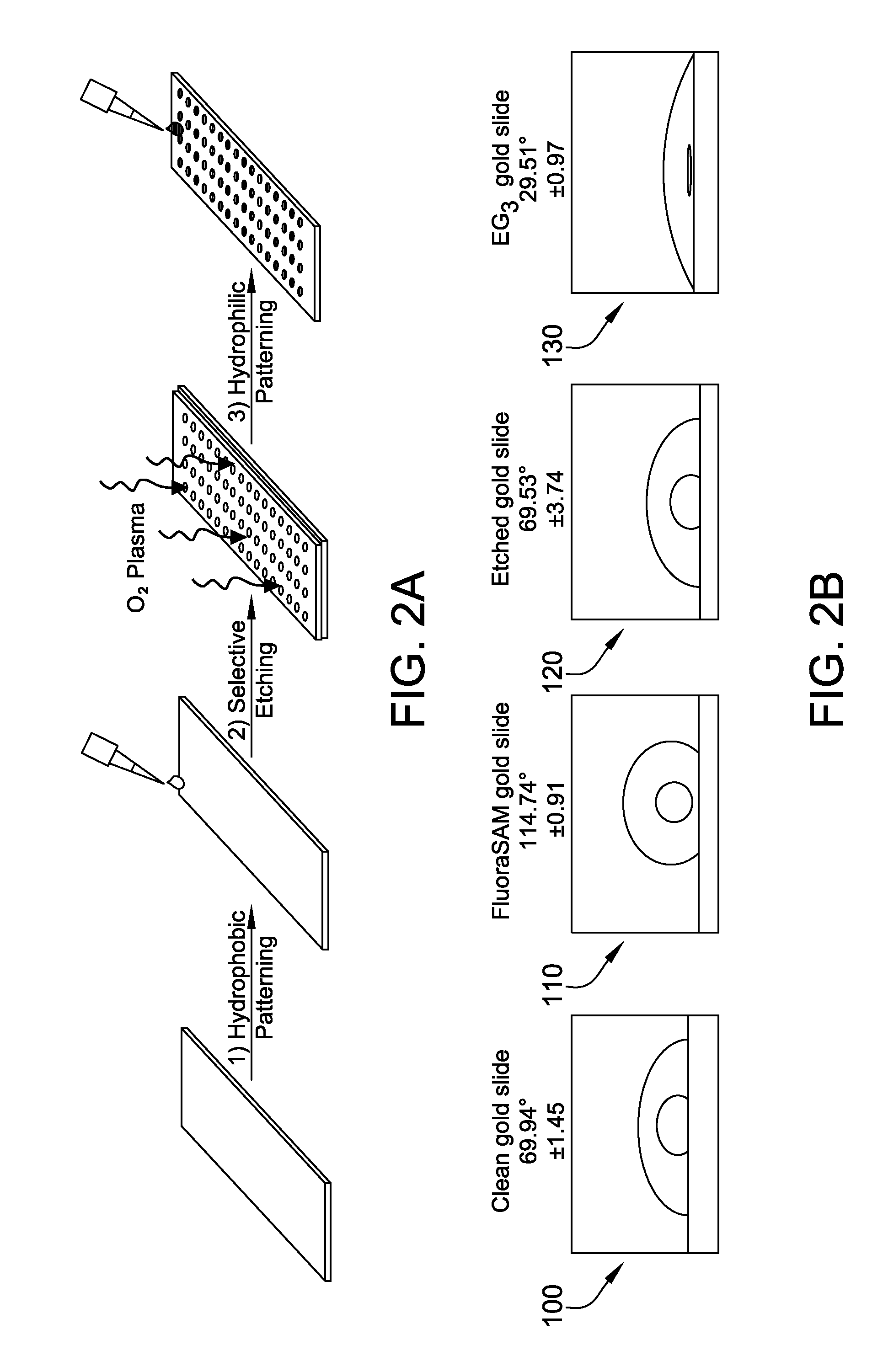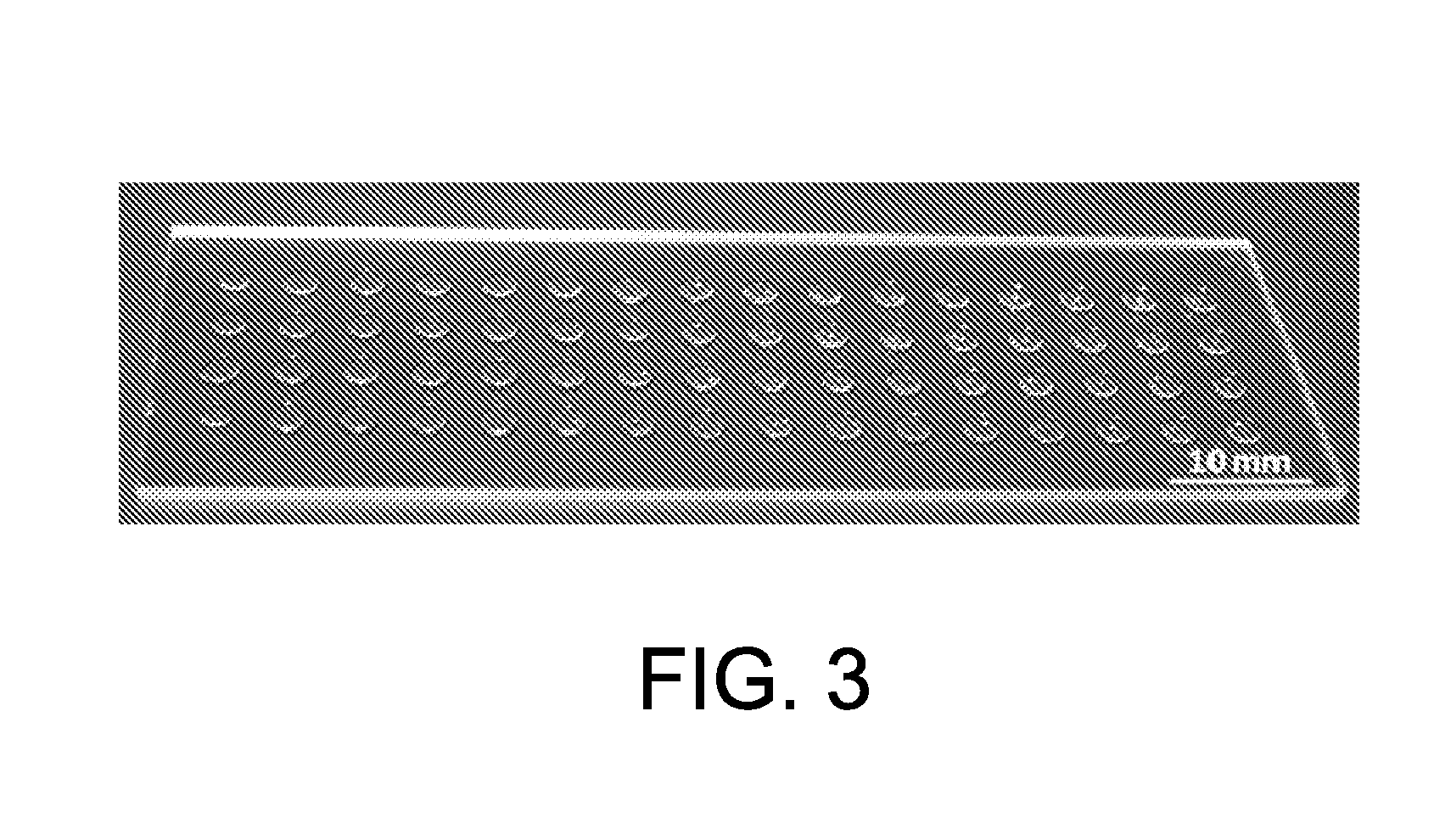Novel method for forming hydrogel arrays using surfaces with differential wettability
a technology of differential wettability and hydrogel, which is applied in the field of preparing biomaterial arrays, can solve the problems of labor-intensive sam array fabrication and the sam array has not yet become a common use tool in biology, and achieves the effects of less labor-intensive processes, rapid identification, and improved sam array forming efficiency
- Summary
- Abstract
- Description
- Claims
- Application Information
AI Technical Summary
Benefits of technology
Problems solved by technology
Method used
Image
Examples
example 1
[0110]In this Example, a hydrogel array immobilized on a glass substrate was prepared.
[0111]A gold substrate was modified with a patterned alkanethiolate self-assembled monolayer (SAMs) to provide isolated hydrophilic regions separated by a surrounding hydrophobic region (as illustrated in FIGS. 1A-1B). As illustrated in FIG. 2A (also shown in FIG. 1A), hydrophobic and hydrophilic SAMs formation on the gold-coated slides were confirmed with contact angle measurements. FIG. 2B provides end views during patterning of a gold substrate at the step before hydrophobic patterning 100; of the substrate having fluoraSAMs 110; of the substrate after etching 120; and of the substrate after hydrophilic patterning 130.
[0112]Hydrogel precursor solutions containing all components required for polymerization reactions were deposited onto the hydrophilic SAMs regions of the patterned substrate (see, FIG. 1B). The hydrophilic regions served to both confine the contents of the solutions deposited onto...
example 2
[0113]In this Example, a hydrogel array was used to determine the effects of substrate properties on initial stem cell adhesion.
[0114]Poly (ethylene glycol) (PEG) hydrogel arrays were formed using patterned hydrophobic / hydrophilic self-assembled monolayers on gold substrates to both define the geometry and confine the contents of each hydrogel spot in the array as described above (see, FIGS. 1A-1B). UV-initiated thiol-ene crosslinking simultaneously polymerized the hydrogel and immobilized the hydrogel spots on the glass to result in the hydrogel array. As illustrated in FIG. 9, hydrogel arrays could be prepared with dimensions compatible with a 64-well microarray add-on (commercially available from Grace Bio-Labs, Bend, Oreg.).
[0115]Hydrogel solutions with fibronectin-derived peptides, fluorescent microspheres and a dithiol crosslinker were deposited onto the SAMs and sandwiched with a silanized glass slide. As shown in FIG. 7, individual hydrogel spots of the hydrogel array could ...
example 3
[0119]In this Example, a patterned hydrogel array was used to investigate endothelial cell tubule network formation (termed “tubulogenesis”) in vitro.
[0120]Specifically, patterned hydrogel arrays were composed of 8-arm, 20 kDa polyethylene glycol) functionalized with norbenene. As illustrated in the schematic shown in FIG. 13A, the patterned hydrogel arrays included hydrogel spots contained from 30 mg / mL to 60 mg / mL PEG, from 30-70% crosslinking with an MMP-degradable crosslinking peptide (KCGGPQGIWGQGCK, SEQ ID NO:35 or KCGGPQGIAGQGCK, SEQ ID NO:36) and 0.25 mM to 2 mM of a cell adhesive peptide (CRGDS, SEQ ID NO:2). Patterned hydrogel array spots were seeded with human umbilical vein endothelial cells (HUVECs), human induced pluripotent stem cell-derived endothelial cells (iPSC-ECs), and human embryonic stem cell-derived endothelial cells (hESC-ECs) in culture media containing standard growth medium for each cell type (Medium 199 and EGM-2 BULLETKIT™ (Lonza, Basel, Switzerland) fo...
PUM
| Property | Measurement | Unit |
|---|---|---|
| height | aaaaa | aaaaa |
| sizes | aaaaa | aaaaa |
| heights | aaaaa | aaaaa |
Abstract
Description
Claims
Application Information
 Login to View More
Login to View More - R&D
- Intellectual Property
- Life Sciences
- Materials
- Tech Scout
- Unparalleled Data Quality
- Higher Quality Content
- 60% Fewer Hallucinations
Browse by: Latest US Patents, China's latest patents, Technical Efficacy Thesaurus, Application Domain, Technology Topic, Popular Technical Reports.
© 2025 PatSnap. All rights reserved.Legal|Privacy policy|Modern Slavery Act Transparency Statement|Sitemap|About US| Contact US: help@patsnap.com



